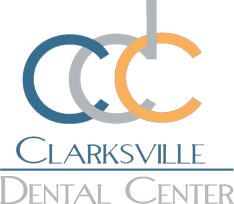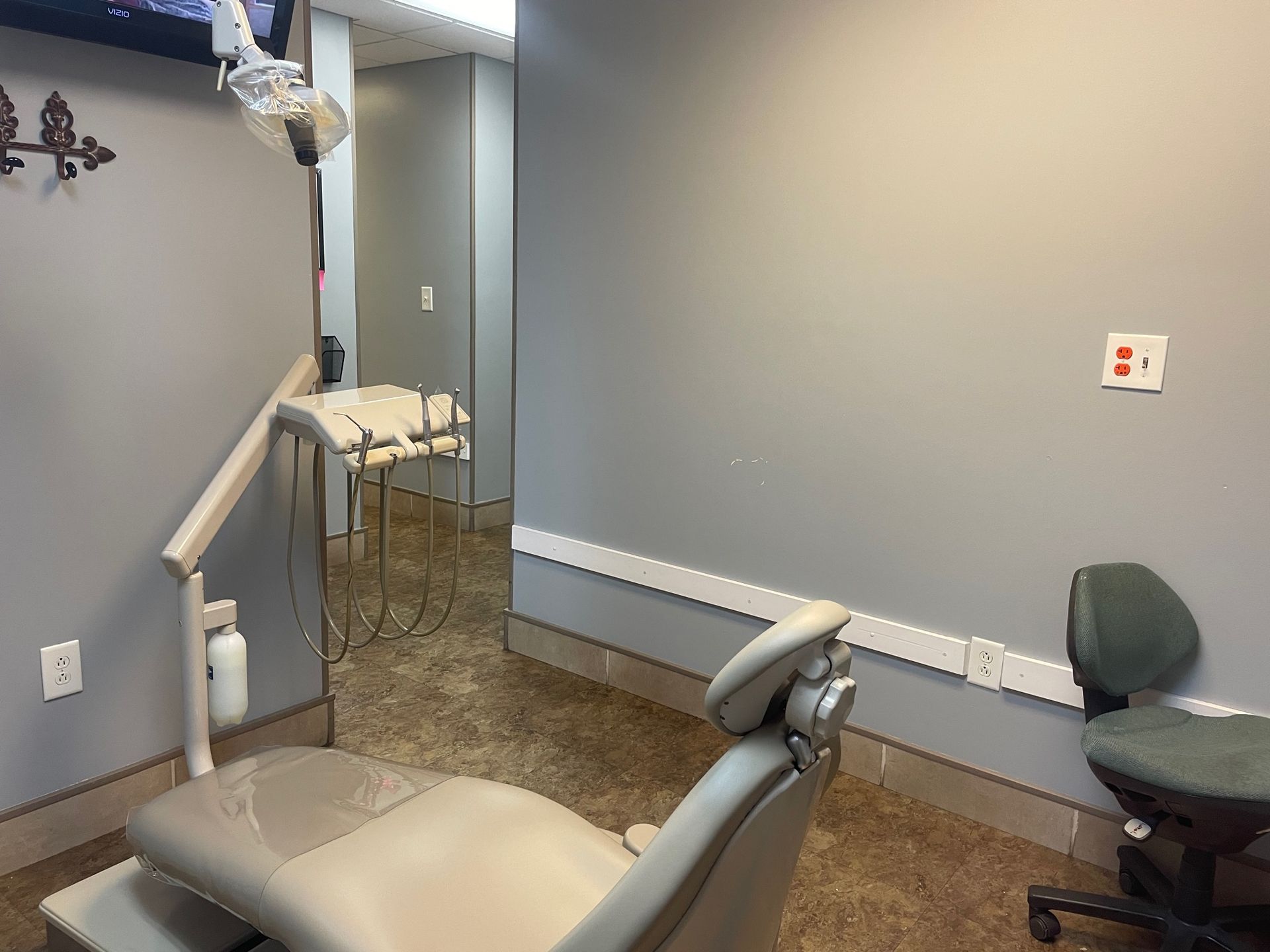A | B | C | D | E | F | G | H | I | J | K | L | M | N | O | P | Q | R | S | T | U | V | W | X | Y | Z
ABUTMENT The teeth on either side of a missing tooth. Abutments are the part of the bridge used to support the replacement of the missing teeth (pontics).
AMALGAM Silver filling. Amalgams are usually placed on the back teeth (posterior teeth).
ANESTHESIA Relieves the sensation of pain.
ANNIVERSARY YEAR Begins on the day of the month that the patients’ insurance became effective.
ANTERIOR TEETH The front teeth (incisors and cupids).
ARCH The upper or lower jaw.
ASSIGNMENT OF BENEFITS A clause in the policy that allows the insured person to direct the payment by the carrier to the dentist. The insured person does this by signing the assignment box on the claim form, or by signing a signature on file form.
BACK TEETH See Posterior Teeth
BASIC Trojan classifies the silver fillings, composite fillings, perio, endo and oral surgery as basic procedures.
BENEFIT LESS BENEFIT See Limited C.O.B.
BENEFIT YEAR Usually begins on the month of the year that the employer purchased the plan.
BICUSPIDS The first and second bicuspids, those are the fourth and fifth teeth from the center of the mouth to the back of the mouth. These are the back teeth that are used for chewing, they only have two points (cusps).
BIRTHDAY RULE When a child is covered under both parent’s plans, the plan of the parent who’s birthday (month and day, not year) falls earlier in the calendar year is billed first. (In cases of divorced or separated parents there are other factors that must be considered.)
BITEWING X-ray that shows the upper and lower teeth’s biting surfaces on the same film. This x-ray shows the portion of the teeth above the gumline.
BRIDGE A fixed appliance (prosthesis) that replaces missing teeth. A bridge is a series of crowns (abutments and pontics).
BRUXISM Clenching or grinding of the teeth.
CALENDAR YEAR January 1st to December 31st.
CALCULUS The sticky film on your teeth (plaque) that has hardened. Also known as tartar.
CANAL The narrow chamber inside the root of the tooth that contains the nerve and blood vessels.
CANINES See cuspids.
CAPITATION PLAN A plan where the dentist is contracted with the administrator to provide dental services to persons covered under the program in return for payment on a per-capita basis (per head). Trojan classifies these plans as Managed Care.
CARIES Correct technical term for decay.
CARRIER The party (usually an insurance company) that pays the claims and collects the premiums.
CARRYOVER If the deductible was paid last year (usually the last quarter, Oct., Nov. or Dec.) the next year (or quarter, Jan., Feb. and March) they do not have to pay the deductible again.
CARVE OUT PLAN See Limited C.O.B.
CLEANING See prophylaxis.
CLOSED PANEL A plan where the covered patient only receives benefits if the services are provided by a dentist who is contracted with the administrator. Trojan classifies these plans as Managed Care.
C.O.B. See Coordination Of Benefits.
COMPLETE SERIES See Full Mouth X-rays.
COMPOSITE FILLING Tooth colored filling. Insurance companies usually only allow them on the front teeth (anterior teeth). When composites are done on the back teeth (posterior teeth) the insurance company usually pays them as an amalgam. Composites are also known as resin fillings.
COORDINATION OF BENEFITS (C.O.B.) This becomes involved when the patient is covered by more than one plan. The first issue to consider is which carrier should be billed first (see birthday rule and gender rule). The second issue is how the second carrier will pay the claim (see Standard C.O.B. and Limited C.O.B.).
CROWN Full coverage for a tooth. sed when the tooth cannot be restored by a filling.
CURETTAGE Surgical scraping of bacteria from the soft tissue. This is a periodontal procedure and is usually performed one quadrant at a time. Procedure code 4220.
CUSPS The high points on the chewing surfaces of the back teeth (posterior teeth).
CUSPIDS The third tooth from the center of the mouth to the back of the mouth. These are the front teeth that have one rounded or pointed edge used for biting. Also known as canines.
DECIDUOUS TEETH See Primary Teeth.
DEDUCTIBLE The amount paid by the patient before the carrier starts to pay benefits.
DENTAL MAINTENANCE ORGANIZATION (D.M.O.) A legal entity that accepts the responsibility of providing services at a fixed price. The enrollees in these plans must have dental care provided through designated doctors. Trojan classifies these plans as Managed Care.
DENTURE A removable appliance (prosthesis) that replaces all of the teeth in either the upper or lower jaw.
DEPENDENT Usually the spouse and children of the subscriber.
DIAGNOSTIC Procedures performed by the dentist to identify what’s going on in the mouth. The most common procedures you will deal with are the exam and x-ray which Trojan classifies as preventive.
D.M.O. See Dental Maintenance Organization.
EDENTULOUS All the teeth are missing in either the upper or lower arch.
ELIGIBILITY Determining if the patient is eligible for benefits. This should be done before the treatment begins.
ENDO See Endodontics.
ENDODONTICS (ENDO) The treatment of diseases or injuries that affect the root tip or nerve of the tooth. The most common procedure that you will deal with is a root canal.
EXCLUSION Services not covered by a dental policy.
FEE SCHEDULE A set amount paid by the insurance company regardless of the doctor’s fee.
FLUORIDE Topical application of a gel or liquid that prevents decay.
F.M.X. See Full Mouth X-rays.
FRONT TEETH See Anterior Teeth.
FULL MOUTH X-RAYS (F.M.X.) X-rays showing all the teeth. Includes 14 periapicals and 2 or 4 bitewings. Also known as a complete series.
GENDER RULE When a child is covered under both parent’s plans, the father’s plan is billed first. (In cases of divorced or separated parents there are other factors that must be considered.)
GENERAL ANESTHESIA Relieves the sensation of pain on the whole body. General anesthesia renders you unconscious.
GINGIVA The gums.
IMPACTION An unerupted or partially erupted tooth that will not fully erupt because it is obstructed by another tooth, bone, or soft tissue.
IMPLANT A post that is implanted in the bone. A crown, bridge or denture is then placed over the implant
INCENTIVE PROGRAM A dental plan where benefits start at a given percentage and the percentage increases each year if the patient visits the dentist annually for preventive treatment. However, if the patient fails to go to the dentist each year the percentage drops back to where it started. Usually only the preventive and basic treatment are incentive.
INCISORS The central and lateral incisor, those are the first and second teeth from the center of the mouth to the back of the mouth. These are the front teeth with the flat edges for biting.
INLAY A laboratory processed restoration made of metal, acrylic or porcelain. This filling does not involve the high points of the tooth (cusps).
LEAST COST ALTERNATIVE A clause in the policy that allows an insurance company to pay for the least expensive treatment.
LIMITED C.O.B. When the patient has two dental plans, the plan that is billed second (secondary) will pay one of the following ways:
- They will pay up to their allowed amount between both plans.
- They will pay their allowed amount using the remaining balance as the base.
LOCAL ANESTHESIA Relieves the sensation of pain in a localized area.
MAINTENANCE OF BENEFITS See Limited C.O.B.
MAJOR Trojan classifies the bridges, dentures and partials as major procedures.
MANAGED CARE PLANS Plans that restrict the type, level and frequency of treatment; limit the access to care; and control the level of reimbursement for services. These are D.M.O.’s, Capitation plans and Closed Panel plans. Trojan does not classify P.P.O. plans as Managed Care.
MANDIBLE The lower jaw.
MAXILLA The upper jaw.
MAXIMUM The maximum dollar amount of benefits a plan will pay toward the cost of dental care over a specific period of time (usually one year).
MOLARS The first, second and third molars, those are the sixth, seventh and eighth teeth from the center of the mouth to the back of the mouth. The back teeth with the large chewing surface on top. They have 4 points (cusps).
NIGHTGUARD A removable acrylic appliance to minimize the effects of grinding the teeth (bruxism) or joint problems (T.M.J.). Usually worn at night to prevent the grinding of teeth or relieve joint pain. Also known as an occlusal guard.
NON DUPLICATION OF BENEFITS See Limited C.O.B.
OCCLUSAL The chewing surfaces of the back teeth.
OCCLUSAL GUARD See Nightguard.
ONLAY A laboratory processed restoration made of metal, porcelain or acrylic that replaces one or more of the highest points of the tooth (cusps).
ORAL SURGERY (O.S.) Surgery of the mouth.
ORTHO See Orthodontics.
ORTHODONTICS (ORTHO) Straightening of the teeth.
O.S. See Oral Surgery.
P.A. Common dental language for a periapical. See Periapical.
PALATE Roof of the mouth.
PANOREX An x-ray taken outside of the mouth that shows all the teeth on one film.
PARTIAL DENTURE A removable appliance (prosthesis) that replaces some of the teeth in either the upper or lower jaw. See illustration below.
PEDO See Pedodontics.
PEDODONTICS (PEDO) The treatment of children’s teeth.
PERIAPICAL An x-ray that shows the whole tooth (above and below the gumline). Also known as a single film or P.A.
PERIO See Periodontics.
PERIO CHARTING Measures the depth that the gums have detached from the side of the tooth forming a pocket (perio pocket).
PERIODONTAL MAINTENANCE Cleaning of the teeth following periodontal treatment, includes perio charting. Procedure code 4910. Also known as a perio prophy or perio recall.
PERIODONTICS (PERIO) The treatment of diseases of the gum or bone (supporting structure).
PERIO POCKET The pocket that forms when the gums detach from the side of the tooth.
PERIO PROPHY See Periodontal Maintenance.
PERIO RECALL See Periodontal Maintenance.
PERMANENT FIRST AND SECOND MOLARS The adult first and second molars, they are the sixth and seventh teeth from the center of the mouth to the back of the mouth. Does not include the third molar (wisdom tooth).
PERMANENT MOLARS The adult first, second and third molars.
PERMANENT DENTITION See Permanent Teeth.
PERMANENT TEETH The adult teeth. Also known as the permanent dentition.
PLAQUE A sticky film on the teeth. If it is not removed by brushing it can harden into calculus.
PONTIC The part of a bridge that replaces the missing teeth.
POSTERIOR TEETH The back teeth (Bicuspids and molars).
P.P.O. See Preferred Provider Organization.
PREAUTH See Predetermination.
PREAUTHORIZATION See Predetermination.
PRECERT See Predetermination.
PRECERTIFICATION See Predetermination.
PRE D See Predetermination.
PREDETERMINATION The doctor notifies the insurance company of the treatment before it begins. The insurance company estimates the benefits that will be paid. This is not a guarantee of payment. Also known as pre d, precertification, precent, preauthorization and preauth.
PREFERRED PROVIDER ORGANIZATION (P.P.O.) A plan where the patient can go to any dentist they choose, or they can go to a preferred dentist and receive discounted fees. These plans are listed on our system as Preferred and Non Preferred.
PREVENTIVE Procedure performed to prevent decay and gum disease. The procedures that Trojan classifies as preventive are the exam, x-rays and prophys. The exam and x-rays are also known as diagnostic procedures.
PRIMARY DENTITION See Primary Teeth.
PRIMARY PLAN When the patient is insured by two plans, the plan that is billed first is the primary plan.
PRIMARY TEETH The baby teeth. Also known as the primary dentition. The baby teeth are replaced by the adult teeth (permanent teeth).
PRIME PLAN See Primary Plan.
PRIOR EXTRACTION COVERAGE Will the insurance company pay to replace a tooth if it was extracted before the patient became insured?
PROPHY See Prophylaxis.
PROPHYLAXIS Cleaning the teeth. Also known as a prophy.
PROSTHETICS A fixed or removable appliance to replace missing teeth. Example: bridges, dentures and partials. Sometimes single crowns are considered prosthetics.
PROSTHETIC REPLACEMENT How old does the crown, bridge, partial or denture have to be before it can be replaced? They usually must be unserviceable also.
PROSTHODONTICS Dealing with the replacement of missing teeth.
PROVIDER The dentist who renders treatment to the patient.
QUADRANT One of the four equal sections of the mouth. The upper right, upper left, lower right or the lower left.
R.C.T. See Root Canal Therapy.
RELATIVE VALUE SCHEDULE (R.V.S.) Procedures are given a point value determined by the degree of difficulty. Each procedure is also given a dollar amount. The dollar amount is multiplied by the point value to determine what the insurance company will pay. Example: A prophy is not as difficult as a crown, so it has a point value of 1.The crown is more difficult than the prophy, so it has a point value of 5. The dollar amount assigned for the prophy is $30. The $30 is multiplied by the point value (1), so the insurance company will pay $30 for the prophy. The dollar amount assigned for the crown is $50. The $50 is multiplied by the point value (5), so the insurance company will pay $250 for the crown.
RESIN FILLING See Composite Filling.
RESTORATIVE Procedures performed to restore the missing part of the teeth. Some insurance companies only consider the fillings to be restorative, others consider the fillings,crowns, bridges and dentures to be restorative.
ROOT CANAL THERAPY (R.C.T.) The nerve of the tooth is removed from the canal inside the root and replaced with a filling material
ROOT PLANING Deep cleaning of the teeth to remove calculus below the gumline. This is not a prophylaxis. This is a periodontal procedure and is usually performed one quadrant at a time. Procedure code 4341.
R.V.S. See Relative Value Schedule.
SEALANT Clear application of acrylic placed over the biting surface of the tooth to prevent decay. Most insurance companies only allow these on permanent teeth.
SECONDARY PLAN When a patient is insured by two plans, the plan that is billed second is the secondary plan.
SIGNATURE ON FILE The insured person signs a form stating that the payments made by the carrier go to the dentist. This form expires 1 year from the date it is signed. Some policies do not accept signature on file.
SINGLE FILM See Periapical.
SUBSCRIBER The person who carries the dental plan.
STANDARD C.O.B. When a patient is insured by two plans, the plan that is billed second will pay up to 100% of U.C.R. between both of the carriers. Example: Both insurance companies were billed $250 and both insurance companies pay at 50%. The first plan paid $125, the second plan paid $125
TARTAR See Calculus.
TEMPOROMANDIBULAR JOINT (T.M.J.) Temporo (temporal bone), mandibular (lower jaw). This is the connecting hinge between the lower jaw and base of the skull. Also known as T.M.J.. T.M.J. treatment is sometimes paid under medical.
THIRD MOLAR See Wisdom Tooth.
T.M.J. See Temporomandibular Joint.
U.C.R. See Usual, Customary and Reasonable.
UNICLAIM A universal claim form that can be used instead of waiting for the patient to bring in their form. Some insurance companies may not accept uniclaims.
USUAL, CUSTOMARY AND REASONABLE (U.C.R.) The doctor’s usual fee, or a higher fee because of special circumstances (difficulty). The doctor’s fee is considered usual, customary and reasonable if it meets the following requirements.
- Usual: The doctor’s usual fee charged.
- Customary: A fee is customary if the doctor’s usual fee is in the same range of other dentists in the same area with the same training.
- Reasonable: The doctor’s modified fee is justified because of special circumstances (difficulty).
VIRGIN TEETH Teeth that have no decay or fillings.
WAIVER OF DEDUCTIBLE Some policies exclude certain types of procedures from the deductible.
WISDOM TOOTH The third molar, this is the eighth tooth from the center of mouth to the back of the mouth. Wisdom teeth are often impacted (obstructed from erupting) and have to be extracted.








